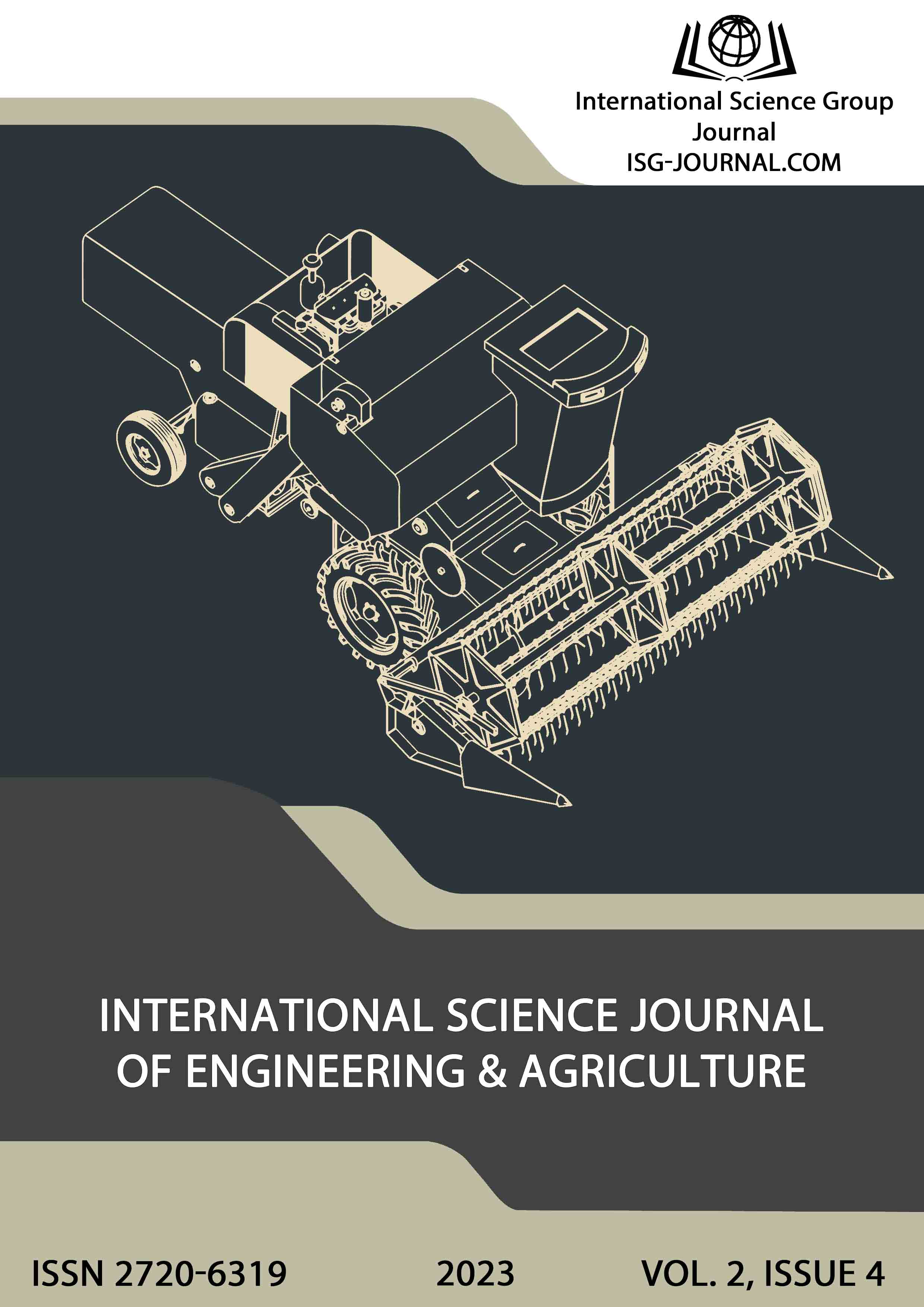The influence of plant density on the yield of seedless watermelon hybrid Kidman F1 on the rootstock Cobalt F1 (Cucurbita maxima x Cucurbita moschata)
DOI:
https://doi.org/10.46299/j.isjea.20230204.08Keywords:
watermelon, triploid hybrid, rootstock, graft, grafted seedlings, density of plants, yieldAbstract
Research materials on the effect of the density of watermelon plants on the duration of the phenological phase were highlighted. This is from the planting of seedlings to the ripening of the first watermelon fruit, biometric indicators of plants, the yield of watermelon fruits of the seedless hybrid Kidman F1 on the rootstock Cobalt F1 (Cucurbita maxima x Cucurbita moschata). Phenological observations of the plants of the grafted Kidman F1 watermelon hybrid showed that the density of the plants did not significantly affect the duration of the phenological phase from planting the seedlings to the first fruit. The duration of the period from the planting of watermelon seedlings to the ripening of the first fruit was the smallest when grown with a plant density of 3-4 thousand pieces/ha and was 69 days. Later, the fruits matured in watermelon, which was grown with a plant density of 5 thousand pcs/ha -71 days. According to biometric indicators, the best developed in the fruit ripening phase were the watermelon plants on the variant with a density of 3 thousand pieces/ha. They had the largest biomass of plants (2541 g), the average number of shoots of the first and second order (27 pcs.), the number of leaves (348 pcs.), the area of the upper leaf (2.84 m2), the length of the main stem was 372 cm. The number of leaves was slightly smaller and the area of the leaf surface in the watermelon of the control variant with a density of 4 thousand pcs./ha. Plant density did not have a significant effect on the biometric parameters of plants. Cultivation of grafted seedless watermelon of the hybrid Kidman F1 with a plant density of 4 thousand pcs/ha provided the highest fruit yield of 63.2 t/ha, including 39.9 t/ha during the first harvest and 23.3 t/ha during the second harvest. The optimal density was 4 thousand plants per hectare.
References
Paris, H. S. (2015). Origin and emergence of the sweet dessert watermelon, Catullus Lantus. Annals of Botany, 116(2), 133-148 [In English].
www. Foord and Fgriculture Organization of the United Nations (FAO).
State Statistics Service [Electronic resource]. - Access mode: http://www.ukrstat.gov.ua/operativ/operativ2020/s g/ppsgk/ppsgk2020.xlsx [In Ukranian].
Лебедева С.П. Тыквенные культуры/Лебедева С.П.- М.: Россельхозиздат., 1987. -80с.
Лебедева С.П. трансплантация (прививка) бахчевых культур /Лебедева С.П. - М.: Сельхозиздат, 1940. – С. 4-11.
Краєвий І.М. Як проводити щеплення гарбузових і пасльонових рослин / І.М. Краєвий// Сад та город.-1941. - №2.-С.16-20.
Груздов С.Ф. Прививка растений /С.Ф. Груздов. - М.: Сельхозиздат, 1954. – 144 с.
Бахчевые культуры/Под редакцией Лымаря А.О.-К.: Аграрная наука, 2000 – С.11-18, 30-36, 84-88, 100-102.
Лимар А.О. Спосіб одержання щепленої розсади кавуна /А.О. Лимарь, К.М. Волошина//Таврійський науковий вісник.-2012.-Вип.79.-С.85-92.
Павлюченко О.О. Міжрядний обробіток кавунів /О.О. Павлюченко //Овочівництво і баштанництво.- К.: Урожай, 1972. – Вип.13. – С.55-56.
Кононенко А.Г. Зависимость урожая плодов арбуза Огонек от площади питания и количества растений в гнезде /А.Г. Кононенко, О.О. Павлюченко, М.М Максимова// Овощеводство и бахчеводство. - К.: Урожай, 1976. - Вып. 21. – С.26-31.
Методика дослідної справи в овочівництві і баштанництві / [за ред. Г. Л. Бондаренка, К. І. Яковенка]. – Харків.: Основа, 2001. – 370 с.
ДСТУ 3805-98 Кавуни продовольчі свіжі. Технічні умови, Чинний від 2000—01—01. Київ.: Держстандарт України, 1995. 17 с.
Каталог гібридів овочевих культур компанії Рійк Цваан Україна https://www.rijkzwaan.ua/Sortiment-cat Crops
Downloads
Published
How to Cite
Issue
Section
License
Copyright (c) 2023 Григорій Яровий, Андрій Галагуря , Інна Гордієнко

This work is licensed under a Creative Commons Attribution 4.0 International License.






